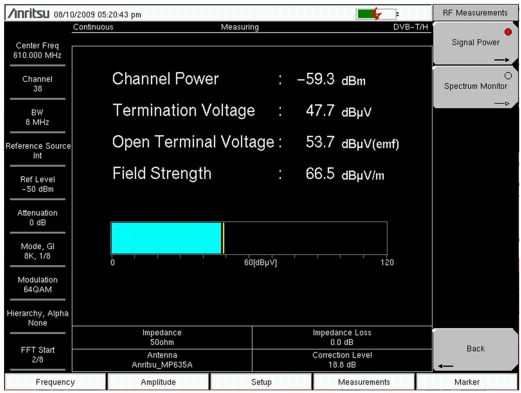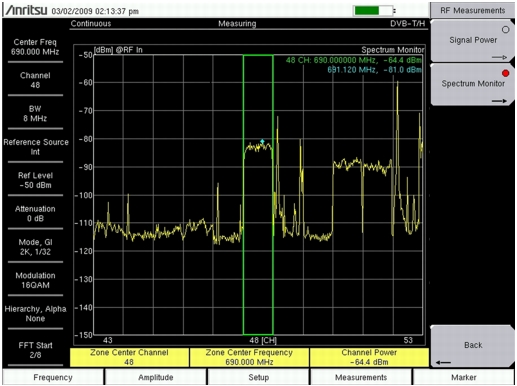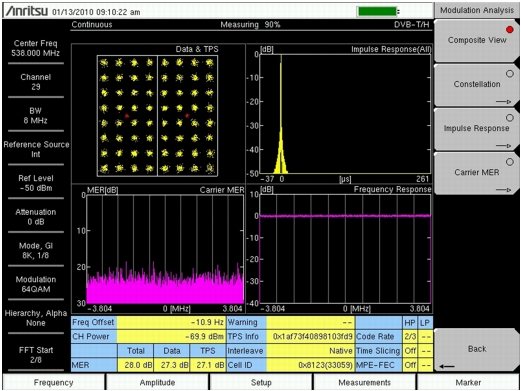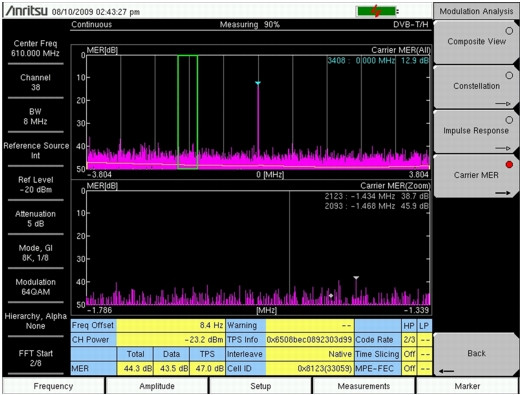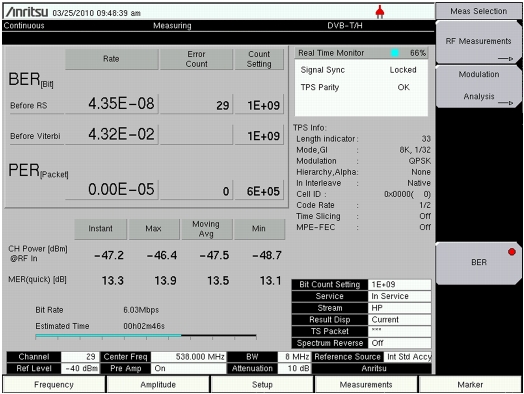Option 64 offers three DVB‑T/H measurement functions: RF Measurements, Modulation Analysis, and (with Option 57) Bit Error Rate (BER).
RF Measurements
Two types of RF measurement can be made: Signal Power and Spectrum Monitor.
Signal Power
The Signal Power measurement is useful for adjusting antenna angles and for area surveys.
Spectrum Monitor
The Spectrum Monitor measurement displays the frequency response around the desired channel. The variable span supports display of up to 51 channels simultaneously, so that broadcast service signals can be checked at a glance.
Four types of Modulation Analysis measurement can be made: Constellation, Impulse Response, Carrier MER, and Frequency Response. A composite view displays all four measurements.
The constellation function is useful for analyzing the condition of the received signal by monitoring the modulation symbol movement. In addition, this function measures the center frequency accurately by using a proprietary signal processing technique.
The Impulse Response function is useful for adjusting the timing of SFN repeaters. This function measures the difference in time of multipath signals. The graph shows the existence of multipath signals and their relative power and time separation.
This measurement can be useful for choosing better locations for repeaters in order to minimize multipath problems.
The Frequency Response function is useful for monitoring received signal conditions. By measuring the channel frequency response, both the multipath effect and frequency selective fading can be observed.
This function is useful for transmitter installation or maintenance because it offers a wide dynamic range (50 dB) on the vertical scale for high‑performance transmitters. It also offers precise checks of each carrier by providing a zoom view for all carriers on the horizontal scale.
The Modulation Error Ratio (MER) measurement function, which directly quantifies the modulation signal quality of digital broadcasting signals, is essential for managing signal margin and the fixed deterioration of equipment with time, as well as for maintaining stable broadcast services.
MER indicates signal deterioration even when BER measurement does not detect errors (error‑free range). Because MER is unrelated to modulation parameters, one MER result can be compared with other MER results.
Measurement of BER is a useful tool for evaluating the quality of a broadcast signal. This option requires that additional hardware be installed in the instrument in order to perform bit error rate (BER) measurements on DVB broadcast signals. Bit Error Rate (BER) and Packet Error Rate (PER) can be measured simultaneously along with channel power and Modulation Error Ratio (MER). BER measurements also accommodate in-service and out-of-service testing.
